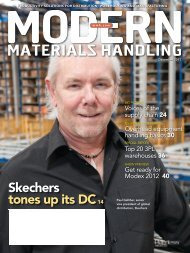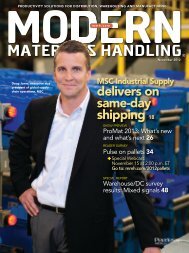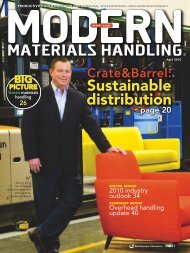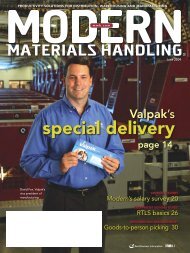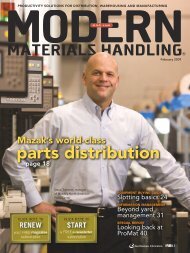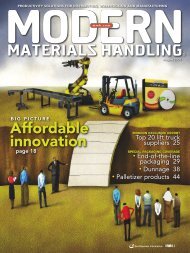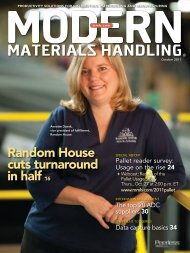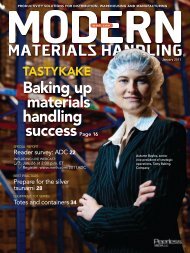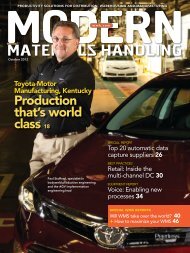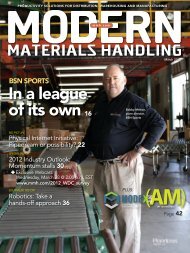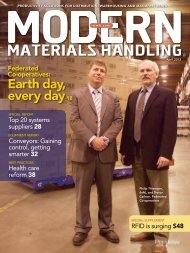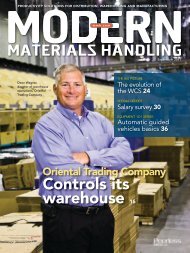Modern Materials Handling - April 2011
Modern Materials Handling - April 2011
Modern Materials Handling - April 2011
Create successful ePaper yourself
Turn your PDF publications into a flip-book with our unique Google optimized e-Paper software.
lift truck TIPSHigh-frequency battery room upgradesIndustrial charging solutions make batteryroom upgrades cost-effective and green.By Josh Bond, Contributing EditorThe majority of the innovation in thebattery market is centered on chargingsolutions, according to Steve Spaar,marketing director for EnerSys. Althoughdevelopments in fast-charge and opportunity-chargetechnology have lured manyoperations away from the centralized batteryroom model, says Spaar, developments havebeen made to update and improve batteryrooms through the use of high-frequencycharging systems.While fast-charge and opportunity-chargesystems offer the appeal of decentralizedcharging and corresponding productivitygains, Spaar says those technologies are notideal for three-shift operations.“You can’t run a battery 24 hours a daywithout a cooling period and expect it tolast more than six months,” he says. “Theseoperations will still need a central batteryroom.”High-frequency chargers are upwards of90% efficient, says Spaar, as opposed to the60% to 85% efficiencies of traditional systems. The efficienciesare often significant enough to generate an ROIin under two years, he says.The California Energy Commission is developing efficiencystandards for industrial battery applications, amove motivated by the state’s high electricity rates, saysSpaar. On the national level, the Environmental ProtectionAgency is working to include efficient industrial chargingsystems in the Energy Star program, he adds. If enacted,the program would represent the first non-retail line ofEnergy Star products.As they continue to refine traditional technologies,battery companies like EnerSys continue to research fuelcell and lithium ion technology, but Spaar says the effortsare not big focuses for R&D resources. Although thetechnology has been proven outside the industrial andmaterials handling sectors, he says, the value propositionsin those areas are simply not there.“But we are continuing to research these technologieswhen the time comes that they make sense in motivepower,” says Spaar.In the meantime, upstarts like fuel cell technology havefew advantages, he says. Productivity gains from decentralizedhydrogen fueling stations are easily matched byfast-charge or opportunity-charge systems, says Spaar. Asfor the environmentally friendly angle, Spaar notes that92% of an average lift truck battery is recyclable, and 95%of lift truck batteries are recycled.“In fact, it is the most recycled product,” says Spaar.“Next is aluminum cans at about a 50% recycle rate.”Josh Bond is a contributing editor to <strong>Modern</strong> and can bereached at josh.d.bond@gmail.com.14 A p r i l 2 0 1 1 / <strong>Modern</strong> <strong>Materials</strong> <strong>Handling</strong> mmh.com



